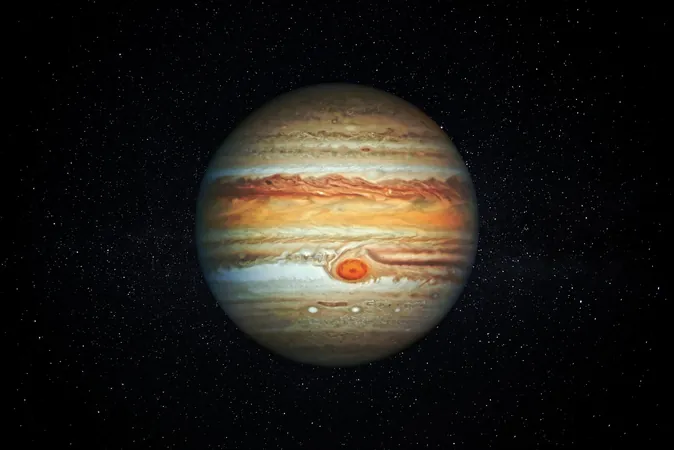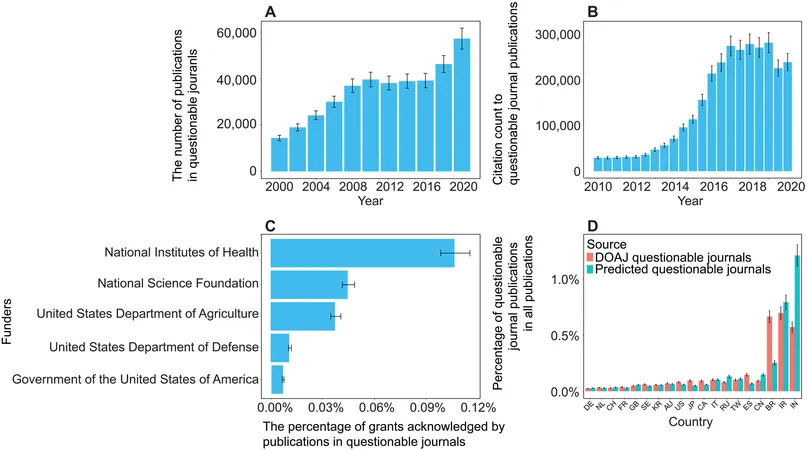
Jupiter's Birth Revealed: What Tiny Molten Spheres in Meteorites Are Telling Us
2025-08-27
Author: Amelia
Over four billion years ago, our solar system was a chaotic arena filled with swirling dust and gas. During this tumultuous time, one planet, Jupiter, emerged by rapidly consuming materials around it, forever altering the cosmos. Its immense gravity sent rocky and icy bodies—known as planetesimals—colliding into one another at breakneck speeds, creating intriguing tiny molten rock droplets called chondrules.
Today, these ancient chondrules, akin to time capsules from 4.6 billion years past, can be found locked in meteorites that have fallen to Earth. Until recently, scientists couldn’t decipher how these tiny spheres formed or what they indicate about the genesis of planets.
A Revelation in Chondrule Formation
However, a groundbreaking study from a collaborative team at Nagoya University in Japan and the Italian National Institute for Astrophysics has shed light on this mystery. Their findings, detailed in the journal Scientific Reports, reveal that Jupiter's formation sparked the fiery collisions that created these chondrules, acting as a celestial clock for scientists trying to pinpoint the giant planet's birth.
Chondrules, typically size of sand grains and measuring between 0.1 to 2 millimeters, formed when dust and rock melted under high heat and subsequently cooled rapidly in the vacuum of space. Over the ages, these droplets became integrated into larger bodies like asteroids, some of which broke apart and fell as meteorites. This provides a unique opportunity to explore the primordial solar system.
The Steam Explosion Theory
Previously, theories on chondrule formation ranged from cosmic lightning strikes to shockwaves from supernovae. However, none effectively accounted for the characteristics found in actual meteorite samples. This new research, led by Professor Sin-iti Sirono, suggests that water played a crucial role.
When planetesimals collided, the abundant water in their structures vaporized instantly, creating steam explosions that fractured molten rock into droplets. This process was likely quite common in the early solar system, especially during the formation of massive planets like Jupiter.
Simulating Jupiter's Chaotic Growth
To test their theory, the researchers created sophisticated computer models that simulated Jupiter’s growth. As the planet accumulated gas, its gravitational pull intensified, slinging planetesimals—many rich in water—together at mind-boggling speeds. Upon impact, the heat melted the rocks, vaporizing the water and creating explosive bursts of steam that produced the chondrules trapped in meteorites today.
By comparing simulated chondrules with real meteorite data, the team discovered a striking match in characteristics, revealing that chondrules primarily formed during a critical period in the solar system’s history, approximately 1.8 million years after its inception.
Dating Planets Through Chondrules
This research transforms how scientists date planet formation. Though traditional radiometric dating presents challenges, this study offers a direct correlation between chondrule creation and planet development, allowing researchers to estimate when different planets formed.
Interestingly, not all chondrules share the same age, suggesting that planets like Jupiter and possibly even Saturn may have been simultaneously active, contributing to their formation.
A Cosmic Diary of Planet Formation
The ramifications extend beyond just understanding our solar system. With thousands of exoplanets discovered, many encircling stars similar to our Sun, this research implies that such violent chondrule-producing collisions might be a universal phenomenon. Massive planets forming swiftly can instigate similar impacts, scattering chondrule-like particles across the cosmos, marking the births of alien worlds.
Meteorites, often underestimated as mere space rocks, are invaluable relics brimming with insights about the universe’s origins. As scientific methods advance, tools like computer modeling and chemical analysis further unravel their rich stories, turning what were once random pebbles into chronicles of cosmic creation—the monumental saga of how entire worlds began.









 Brasil (PT)
Brasil (PT)
 Canada (EN)
Canada (EN)
 Chile (ES)
Chile (ES)
 Česko (CS)
Česko (CS)
 대한민국 (KO)
대한민국 (KO)
 España (ES)
España (ES)
 France (FR)
France (FR)
 Hong Kong (EN)
Hong Kong (EN)
 Italia (IT)
Italia (IT)
 日本 (JA)
日本 (JA)
 Magyarország (HU)
Magyarország (HU)
 Norge (NO)
Norge (NO)
 Polska (PL)
Polska (PL)
 Schweiz (DE)
Schweiz (DE)
 Singapore (EN)
Singapore (EN)
 Sverige (SV)
Sverige (SV)
 Suomi (FI)
Suomi (FI)
 Türkiye (TR)
Türkiye (TR)
 الإمارات العربية المتحدة (AR)
الإمارات العربية المتحدة (AR)